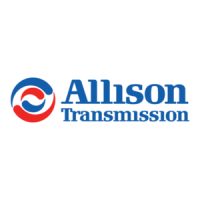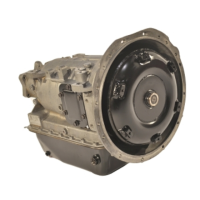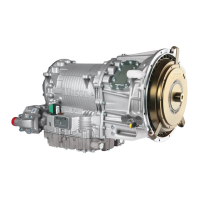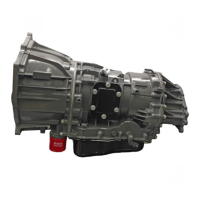Copyright © 1996 General Motors Corp. 4–9
GENERAL OVERHAUL INFORMATION
• A hot plate or heating equipment (for heat-
ing bearings or other interference-fit parts
to aid assembly)
• A press for disassembly and assembly of
spring-loaded clutches, valves, and interfer-
ence-fit parts
• Clean, lint-free shop cloths (do not use
waste)
• Boxes, receptacles for parts
• Supply of wood blocks
• Oil-soluble, non-fibrous grease (petrola-
tum)
• Non-hardening sealer (for plugs, seals, etc.)
4–3. REPLACEMENT PARTS
a. Ordering Information. Refer to the latest edi-
tion of Parts Catalog PC1235EN for parts information.
b. Parts Normally Replaced. The following
parts are normally replaced at each transmission over-
haul.
• Gaskets
• Washers or snaprings damaged by removal
• Center support bolt
• Oil seals, piston sealrings
4–4. CAREFUL HANDLING
During all rebuild procedures, handle parts and subas-
semblies carefully to prevent nicking, scratching, and
denting. Parts which have close operating clearance
can bind if damaged. Parts which depend upon smooth
surfaces for sealing may leak if scratched. This is very
important concerning parts of the control valve body
assembly (valves, when dry, must move freely by their
own weight in their bores). Carefully handle and pro-
tect such parts during removal, cleaning, inspection,
and installation. Keep the parts clean while in contain-
ers awaiting installation.
4–5. CLEANING AND INSPECTION
NOTE:
For detailed inspection criteria, refer to
GN1948EN, AT Technician's Guide.
a. Dirt-Free Assembly. All parts must be clean
to permit effective inspection. It is very important that
no dirt or foreign material be allowed to enter the
transmission. Even minute particles can cause the mal-
function of close-fit parts, such as valves.
b. Cleaning Parts
(1) Clean all metallic parts thoroughly with
mineral spirits or by steam-cleaning. Do not use caus-
tic soda solution for steam cleaning.
(2) Dry parts (except bearings) with com-
pressed air. Lubricate steam-cleaned parts with trans-
mission fluid immediately after drying.
(3) Clean hydraulic passages by working a
piece of soft wire back and forth through the passages
and flushing with mineral spirits. Dry the passages
with compressed air.
(4) After cleaning, examine parts (especially
hydraulic passages) to make certain they are entirely
clean. Reclean them if necessary.
(5) Use only petroleum base solvents for
cleaning oil seals. Solvents such as trichloroethylene,
benzol, acetone, and all aromatics are harmful to seals
made from polyacrylate rubber.
c. Cleaning Bearings
(1) Wash bearings that have been in service
thoroughly in mineral spirits.
WARNING!
Do not burn discarded Teflon
®
seals; toxic gases
are produced by burning.
WARNING!
Never dry bearings with compressed air. A spin-
ning bearing can disintegrate allowing balls or
rollers to become lethal flying projectiles. Also,
spinning a bearing without lubrication can dam-
age the bearing.

